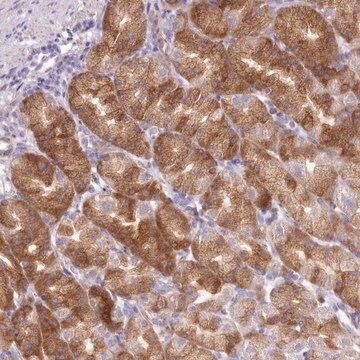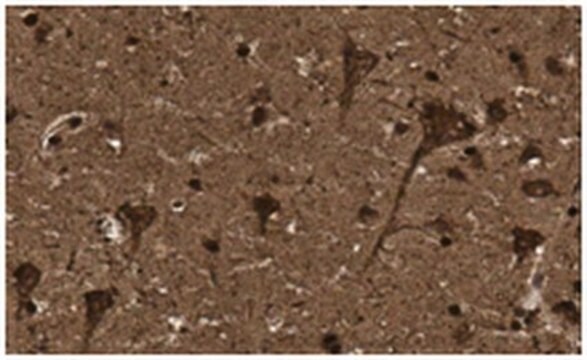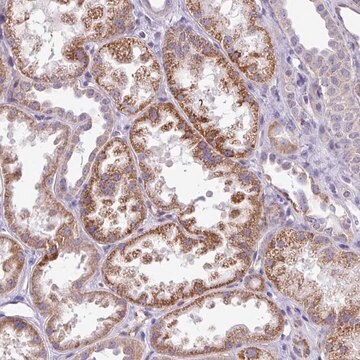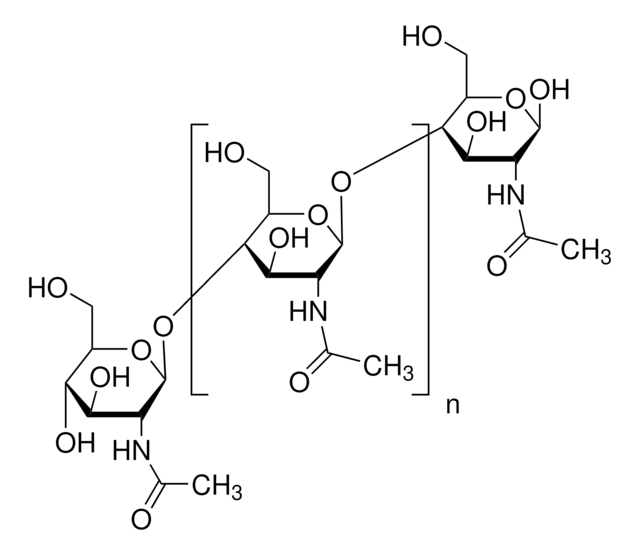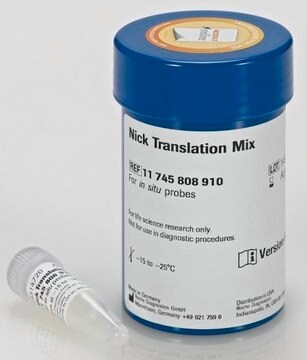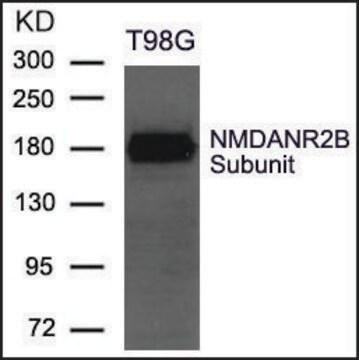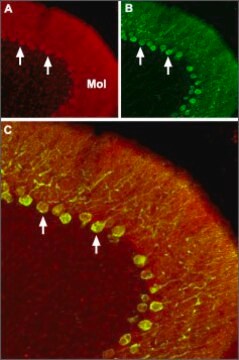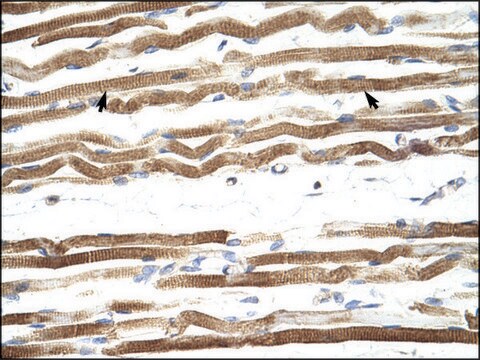MAB2226
Anti-Piccolo Antibody, clone 4G3.3
clone 4G3.3, from mouse
Sinónimos:
presynaptic cytomatrix protein, Aczonin
About This Item
WB
western blot: suitable
Productos recomendados
origen biológico
mouse
Nivel de calidad
forma del anticuerpo
purified antibody
tipo de anticuerpo
primary antibodies
clon
4G3.3, monoclonal
reactividad de especies
mouse
reactividad de especies (predicha por homología)
human (based on 82% homology), rat (92% homology)
técnicas
immunohistochemistry: suitable (paraffin)
western blot: suitable
isotipo
IgMκ
Nº de acceso NCBI
Nº de acceso UniProt
Condiciones de envío
wet ice
modificación del objetivo postraduccional
unmodified
Información sobre el gen
human ... PCLO(27445)
mouse ... Pclo(26875)
Descripción general
Especificidad
Inmunógeno
Aplicación
Representative images from a previous lot.
Piccolo staining pattern/morphology on mouse brain tissue/cerebellum. Tissue was pretreated with citrate pH 6.0, antigen retrieval. A previous lot of the antibody was diluted to 1:300, using IHC-Select Detection with HRP-DAB. Immunoreactivity is localized to the synaptic junction of neurons in the granular layer and Purkinje cells(arrow).
Neuroscience
Synapse & Synaptic Biology
Calidad
Descripción de destino
Forma física
Almacenamiento y estabilidad
Nota de análisis
Rat brain lysate, mouse cerebellum
Otras notas
Cláusula de descargo de responsabilidad
¿No encuentra el producto adecuado?
Pruebe nuestro Herramienta de selección de productos.
Código de clase de almacenamiento
12 - Non Combustible Liquids
Clase de riesgo para el agua (WGK)
WGK 2
Punto de inflamabilidad (°F)
Not applicable
Punto de inflamabilidad (°C)
Not applicable
Certificados de análisis (COA)
Busque Certificados de análisis (COA) introduciendo el número de lote del producto. Los números de lote se encuentran en la etiqueta del producto después de las palabras «Lot» o «Batch»
¿Ya tiene este producto?
Encuentre la documentación para los productos que ha comprado recientemente en la Biblioteca de documentos.
Nuestro equipo de científicos tiene experiencia en todas las áreas de investigación: Ciencias de la vida, Ciencia de los materiales, Síntesis química, Cromatografía, Analítica y muchas otras.
Póngase en contacto con el Servicio técnico